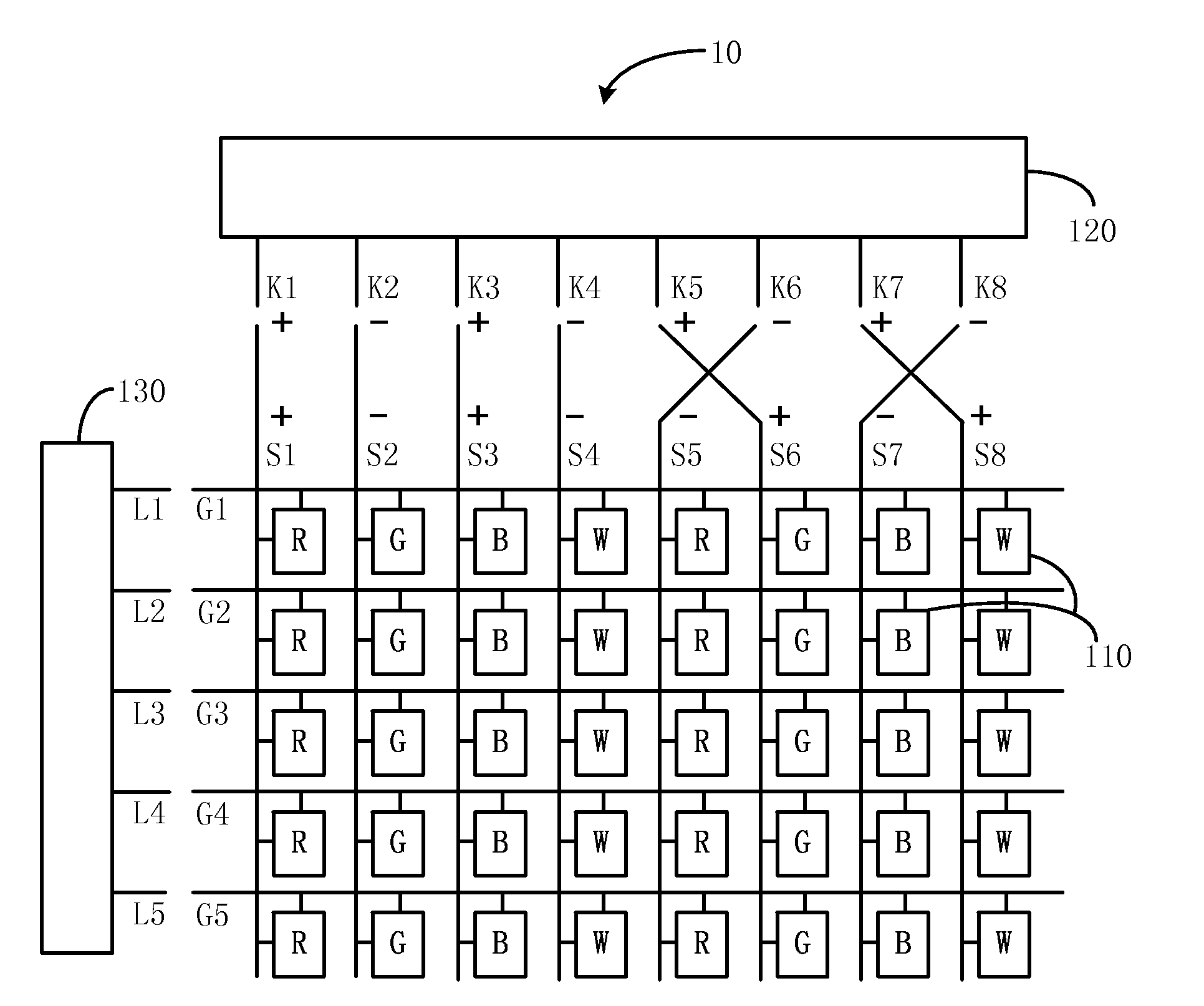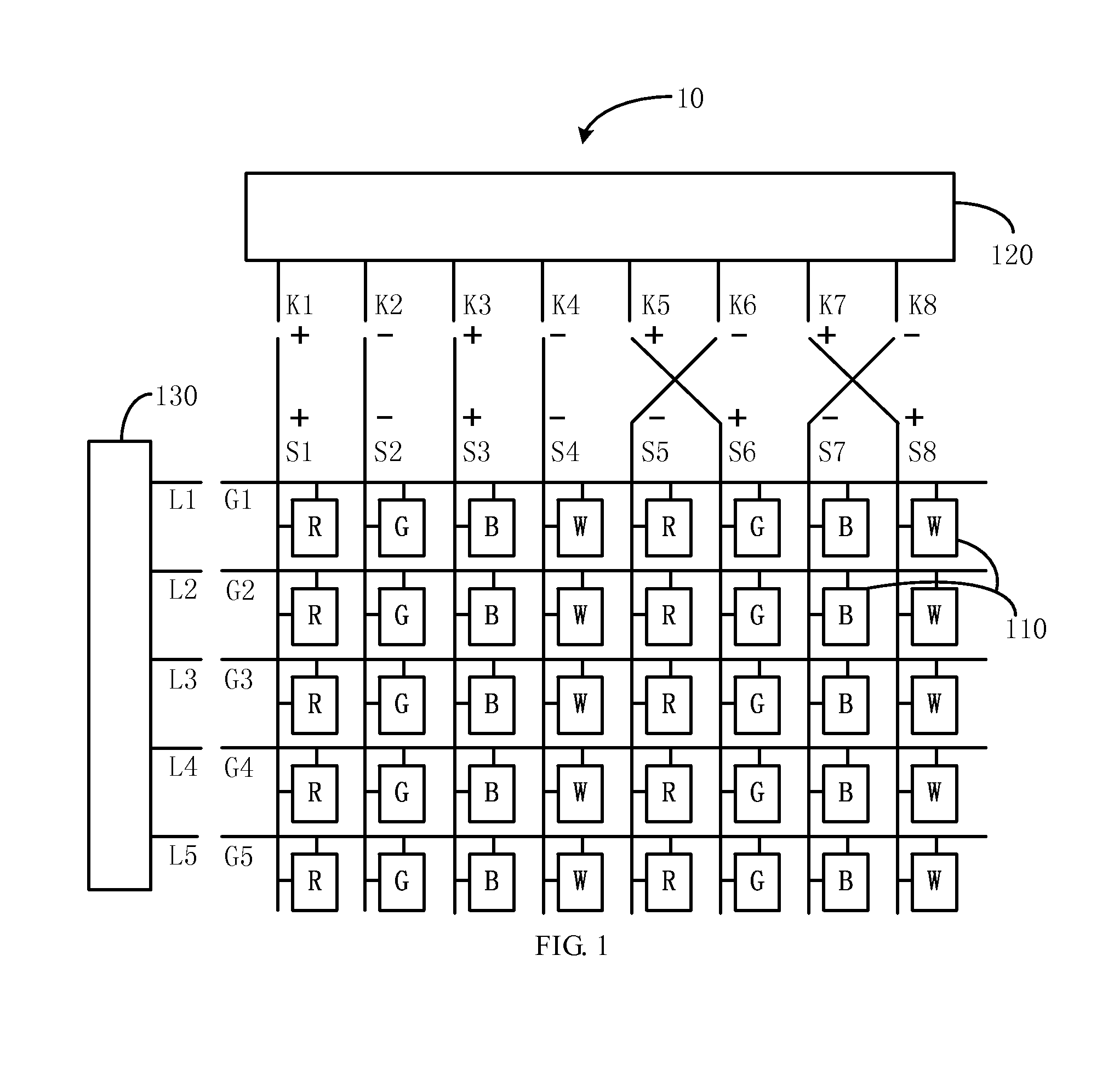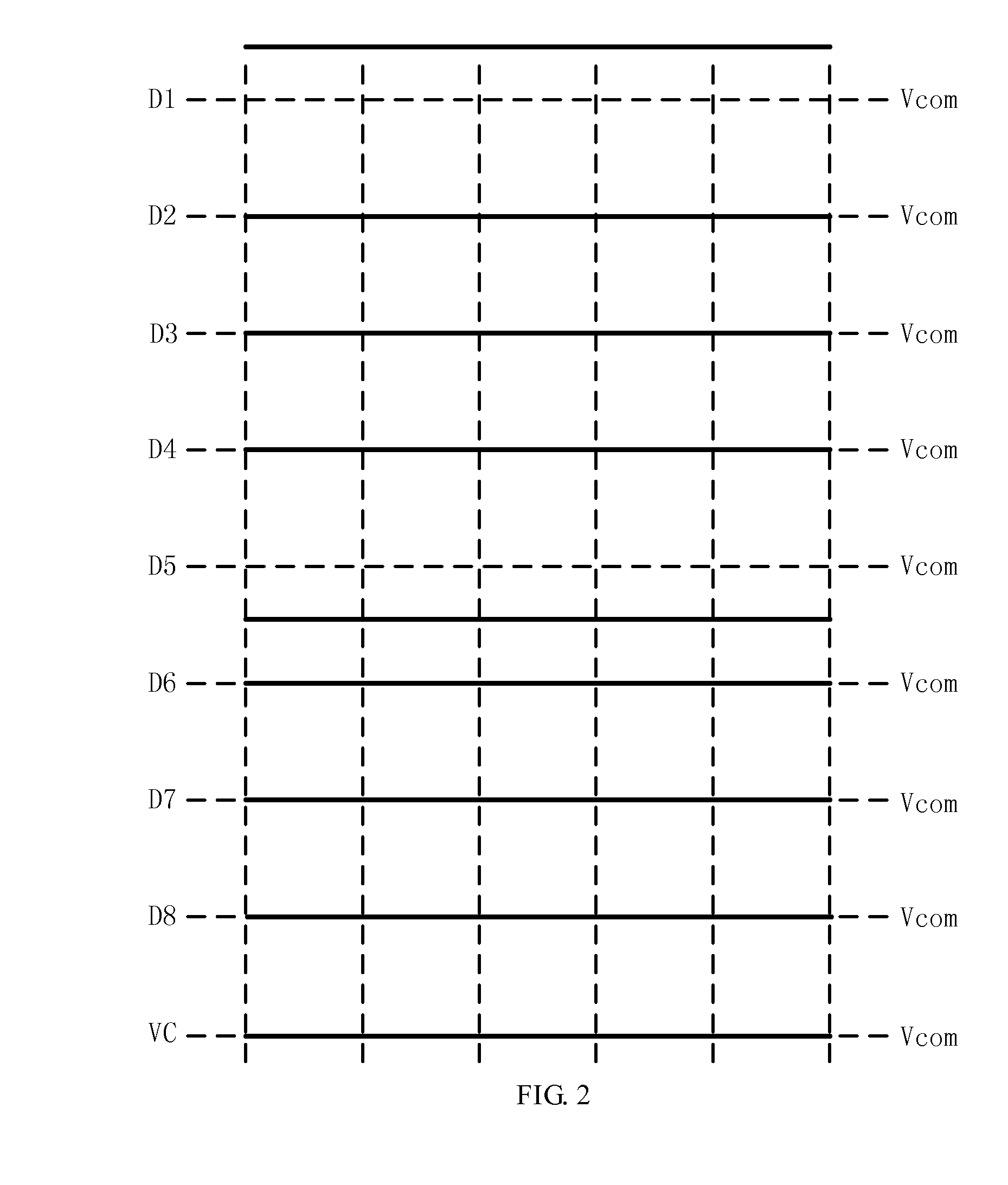Liquid crystal display device
- Summary
- Abstract
- Description
- Claims
- Application Information
AI Technical Summary
Benefits of technology
Problems solved by technology
Method used
Image
Examples
Embodiment Construction
[0046]The following content combines figures and embodiments for detail description of the present invention.
[0047]With reference to FIG. 1, and FIG. 1 is a schematic structure diagram of a liquid crystal display device according to an embodiment of the present invention. As shown in FIG. 1, the liquid crystal display device 10 includes multiple sub-pixels 110 arranged along a row direction and a column direction as a matrix, and multiple data lines disposed along the column direction. The multiple data lines are used for respectively applying data signals to corresponding columns of the sub-pixels. The liquid crystal display device 10 further includes multiple scanning lines (or gate lines) disposed along the row direction. The multiple scanning lines are used for respectively applying scanning signals to corresponding rows of the sub-pixels 110 in order to turn on each row of the sub-pixels 110 so as to receive a data signal connected at each column of the sub-pixels. In FIG. 1, a...
PUM
 Login to View More
Login to View More Abstract
Description
Claims
Application Information
 Login to View More
Login to View More - R&D
- Intellectual Property
- Life Sciences
- Materials
- Tech Scout
- Unparalleled Data Quality
- Higher Quality Content
- 60% Fewer Hallucinations
Browse by: Latest US Patents, China's latest patents, Technical Efficacy Thesaurus, Application Domain, Technology Topic, Popular Technical Reports.
© 2025 PatSnap. All rights reserved.Legal|Privacy policy|Modern Slavery Act Transparency Statement|Sitemap|About US| Contact US: help@patsnap.com



